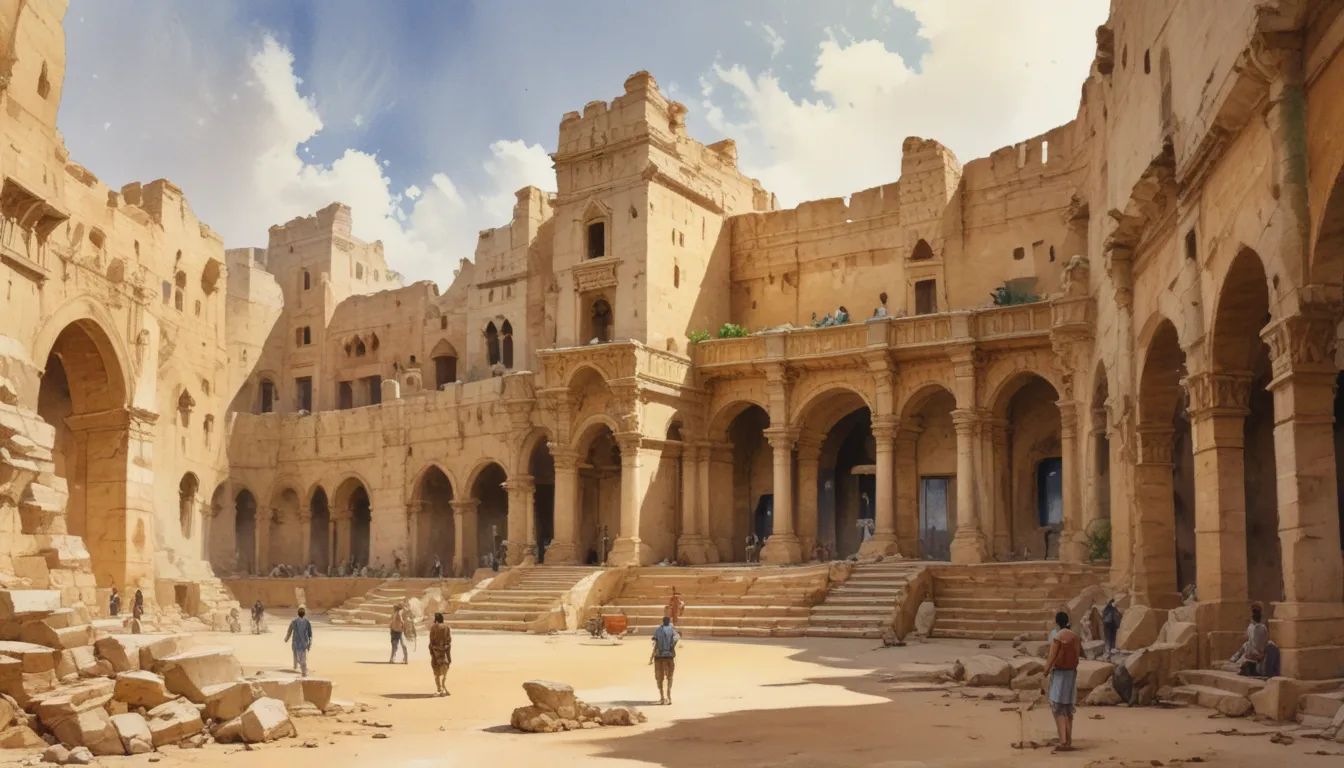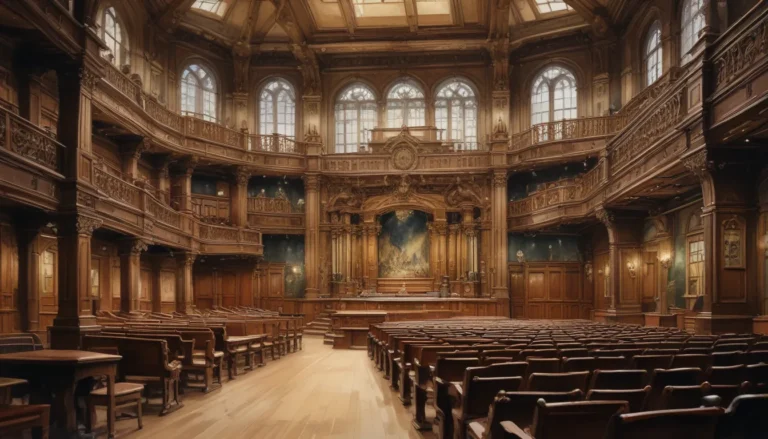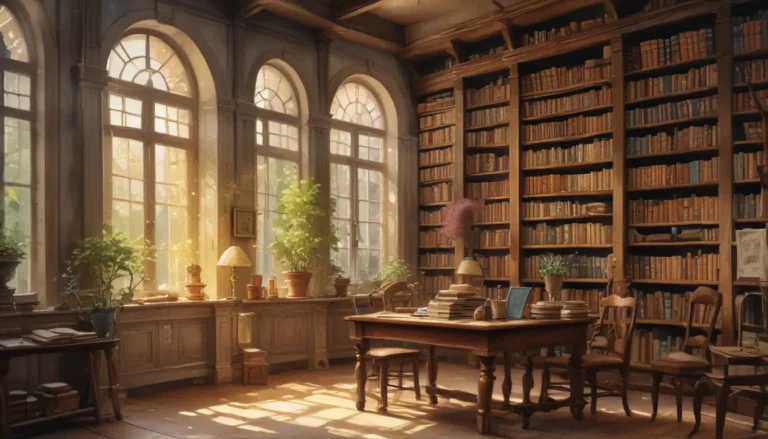The images in our articles are for illustrative purposes only and may not exactly match the content. They are intended to capture your interest and complement the text, not to replace it.
Situated in the heart of Tunisia lies the captivating town of El Djem, also known as Thysdrus, boasting one of the most extraordinary historical landmarks in the country – the magnificent Roman amphitheatre. Dating back to the 3rd century AD, this ancient masterpiece not only serves as a testament to architectural brilliance but also holds a treasure trove of secrets and stories waiting to be discovered. In this article, we invite you to embark on a journey through time as we delve into the fascinating world of El Djem and unveil 19 astonishing facts about this remarkable landmark. From its sheer size to its profound historical significance, El Djem’s amphitheatre is sure to leave you in awe. So, let’s set forth on an exploration and unravel the grandeur of El Djem!
Exploring the Marvels of El Djem’s Roman Amphitheatre
El Djem proudly boasts of being home to one of the most magnificent Roman amphitheatres in the world. Dating back to the 3rd century AD, this well-preserved structure stands as a testament to the grandeur and engineering prowess of ancient Romans. With a seating capacity of up to 35,000 spectators, it serves as a remarkable example of Roman architectural excellence.
The Third Largest Wonder of Roman Architecture
Not only is El Djem’s amphitheatre well-preserved, but it also claims the title of being the third largest Roman amphitheatre globally, following the illustrious Colosseum in Rome and the arena in Capua, Italy. Its sheer size and impressive architectural features continue to mesmerize visitors from across the world.
A UNESCO World Heritage Gem
With its impeccable historical value, El Djem, along with its Roman amphitheatre, has been rightfully recognized as a UNESCO World Heritage Site. This prestigious designation signifies the universal significance of this historical gem and emphasizes the importance of preserving it for future generations.
Unraveling the Mysteries of El Djem’s Amphitheatre
Beneath the grandeur of the amphitheatre lies a labyrinthine network of underground passages and chambers. These intricately designed spaces once housed gladiators, animals, and equipment, offering easy access to the arena during events. Exploring these subterranean wonders offers a glimpse into the fascinating logistics of ancient Roman entertainment.
The Cinematic Allure of El Djem
The awe-inspiring presence of El Djem’s amphitheatre has not gone unnoticed by filmmakers worldwide. It has served as a backdrop for several notable movies, including the iconic 2000 film “Gladiator” starring Russell Crowe. The majestic amphitheatre adds an authentic touch to period films, captivating audiences with its timeless beauty.
The Enigmatic Connection to Ancient Carthage
El Djem, formerly known as Thysdrus in the Roman era, played a pivotal role in the history of Ancient Carthage. Acting as a crucial link between Carthage and the Roman Empire, the city contributed significantly to economic and cultural exchanges, shaping its prosperity and cultural identity.
The Timeless Appeal of “Monty Python’s Life of Brian”
Further elevating its fame, El Djem’s amphitheatre served as a filming location for the legendary comedy film “Monty Python’s Life of Brian” in 1979. The distinctive architecture of the amphitheatre added an authentic charm to the satirical portrayal of Roman life, enchanting audiences with its historical backdrop.
Soaring Heights and Panoramic Views
Ascend to the summits of El Djem’s amphitheatre, and you will be greeted with breathtaking panoramic views of the surrounding landscapes. From this vantage point, marvel at the vastness of the amphitheatre itself and appreciate the quaint town that has thrived around it over the centuries.
The Intricate Legacy of El Djem’s Mosaics
El Djem is renowned for its remarkable collection of ancient mosaics, intricately portraying scenes from Roman mythology, daily life, and historical events. These artistic marvels offer valuable insights into the beliefs and customs of the ancient inhabitants of the region, showcasing their artistic prowess and cultural heritage.
The Majestic Arch of Tiberius
In addition to the amphitheatre, El Djem proudly features the monumental Arch of Tiberius, dedicated to the Roman Emperor Tiberius. Serving as the main entrance to the city, this grand arch with its intricate carvings stands as a testament to the city’s ancient grandeur and architectural sophistication.
The Cultural Icon of Olive Oil Production
The region surrounding El Djem is renowned for its thriving olive oil industry. The fertile lands and favorable climate make it the ideal location for cultivating olives, with locals taking pride in producing some of the finest olive oil in Tunisia. This cultural legacy adds to El Djem’s rich tapestry of heritage and tradition.
Embracing Heritage and Identity
El Djem’s amphitheatre embodies a powerful symbol of the region’s rich heritage and cultural identity. It stands as a poignant reminder of the enduring legacy of the Roman Empire and the community’s resilience throughout history, underscoring the blend of ancient and contemporary influences that define El Djem.
Architectural Marvel of the Double Tiered Façade
The façade of El Djem’s amphitheatre is a marvel of architectural ingenuity. Featuring a unique double-tiered design adorned with rows of arched openings, this intricate façade adds to the grandeur of the structure and highlights the skilled craftsmanship of the ancient Romans, leaving visitors in awe of its beauty.
Reviving the Glorious Era of Roman Games
The amphitheatre of El Djem played a pivotal role in hosting a variety of Roman games and spectacles, serving as a hub of entertainment for the citizens and showcasing the grandeur and power of the Roman Empire. It stands as a testament to the cultural significance and historical legacy of these ancient games.
Strategic Crossroads of El Djem
Nestled in central Tunisia, El Djem served as a strategic crossroads connecting different regions of North Africa. Its prime location facilitated trade, commerce, and cultural exchanges, shaping its vibrant history as a melting pot of diverse influences and identities.
Restoring the Splendor of El Djem
Over the years, dedicated efforts have been made to preserve and restore El Djem’s amphitheatre, ensuring its architectural splendor continues to inspire future generations. These restoration projects not only safeguard its historical significance but also offer visitors a glimpse into its illustrious past.
Unveiling the Ingenious Roman Engineering
The construction of El Djem’s amphitheatre stands as a testament to the remarkable engineering skills of the ancient Romans. Its robust structure and well-preserved architecture showcase the innovative techniques and craftsmanship employed by Roman engineers in erecting monumental buildings, reflecting their ingenuity and expertise.
Celebrating a Fusion of Cultures
El Djem’s history is a captivating fusion of Roman and North African cultures. While reflecting the imprint of the Roman Empire, the city also embraces the distinctive customs and traditions of the local Berber population, creating a vibrant and culturally diverse ambiance that resonates with visitors from all walks of life.
The Global Allure of El Djem’s Amphitheatre
Drawing visitors from far and wide, El Djem’s amphitheatre stands as a global magnet for tourists. Its monumental size, historical significance, and impeccable preservation make it a must-visit destination for history enthusiasts, architecture aficionados, and curious travelers seeking to immerse themselves in the splendors of ancient Rome.
Embarking on an Extraordinary Journey
El Djem beckons you to embark on an extraordinary journey through time, where ancient history and architectural wonders converge to create a mesmerizing tapestry of stories and experiences. Whether you’re a history buff, an admirer of architectural marvels, or simply someone captivated by the allure of ancient landmarks, El Djem promises a captivating voyage filled with wonder and discovery. Prepare to be enchanted by the grandeur of the amphitheatre, the richness of its historical narrative, and the enchanting charm of the town that surrounds it. Pack your bags and set forth on an unforgettable adventure to explore the astonishing wonders of El Djem!
FAQs
Q: How old is El Djem’s Amphitheater?
A: The Amphitheater of El Djem dates back to the 3rd century AD, making it over 1,800 years old.
Q: How large is El Djem’s Amphitheater?
A: El Djem’s Amphitheater is one of the largest Roman amphitheaters ever built, with a seating capacity of around 35,000 spectators.
Q: Are guided tours available in El Djem?
A: Yes, guided tours are available in El Djem, providing in-depth insights into the history, architecture, and significance of the amphitheater and its surroundings.
Q: Can visitors explore the underground passages of El Djem’s Amphitheater?
A: Yes, visitors are permitted to explore the underground passages of El Djem’s Amphitheater, offering a unique perspective on the structure’s construction and magnificence.
Q: How long does a visit to El Djem typically last?
A: The duration of a visit to El Djem may vary based on individual interests, but a few hours are generally sufficient to explore the amphitheater and the town.
Dive Into a World of Historical Wonders
El Djem’s enchanting history and architectural splendors are just the beginning of your journey through time. Explore the captivating stories behind Isleta Amphitheater, where music and culture intertwine in a breathtaking setting. Immerse yourself in the opulence and ingenuity of Mughal architecture at Fatehpur Sikri, a UNESCO World Heritage Site that showcases the grandeur of a bygone era. Delve into the epic tale of the fall of the Roman Empire through the lens of Hollywood’s finest filmmakers for a cinematic experience like no other. Embark on an unforgettable adventure through history, one astonishing fact at a time.
Your Feedback Matters
At the core of our mission is delivering trustworthy and engaging content to our readers. Each fact presented on our platform is contributed by real users like yourself, providing diverse insights and information. Our dedicated editors ensure the highest standards of accuracy and authenticity by meticulously reviewing every submission. Trust in our commitment to quality and reliability as you explore and enrich your knowledge with us.






